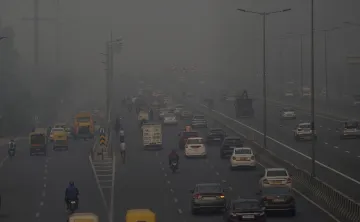Delhi air pollution latest update: The national capital on Wednesday recorded the worst air quality in the country as the pollution levels plunged into the 'severe' category in more areas than the previous day. A thick layer of smog shrouded the Delhi-National Capital Region during the morning and evening hours, worsening the air quality in the region. In the country, the 24-hour average air quality index recorded at 4 pm was the highest in Delhi at 364, followed by Rajasthan's Dausa with 316 and Ghaziabad with 305, Central Pollution Control Board (CPCB) data showed.
AQI in Delhi's various areas
The air quality in Delhi's Anand Vihar, Bawana, Jahangirpuri and Vivek Vihar was recorded in the 'severe' category on Wednesday. On Tuesday, the AQI was 'severe' only in Anand Vihar.
Dwarka, Rohini, DTU, IGI Airport (T3), ITO, Mundka, Narela, Patparganj, Shadipur, Sonia Vihar, Wazirpur, Alipur, Ashok Vihar, Aya Nagar, Burari, Mandir Marg, Jawaharlal Nehru Stadium, Najafgarh and Nehru Nagar were among 24 areas of the national capital where the AQI was in the 'very poor' category on Wednesday.
Air quality in Noida, Gurugram
However, the air quality in neighbouring Faridabad, Noida, Gurugram, Meerut and Greater Noida remained slightly better, in the 'poor' category. Air quality is classified under four different stages: Stage I – 'Poor' (AQI 201-300); Stage II – 'Very Poor' (AQI 301-400); Stage III – 'Severe' (AQI 401-450); and Stage IV – 'Severe Plus' (AQI>450).
The PM2.5 level was recorded at an alarming 157 micrograms per cubic metre at 7 pm, according to the CPCB. PM2.5 refers to fine inhalable particles with diameters generally measuring 2.5 micrometres and smaller, posing the greatest risk to health.The acceptable annual standard for PM 2.5 is 40 micrograms per cubic metre.
During the winter months, Delhi experiences severe pollution, driven by a combination of factors such as low wind speeds, dropping temperatures, high moisture levels and the presence of pollution particles that act as surfaces for condensation.
